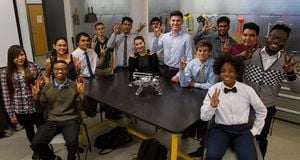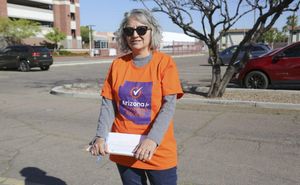A SpaceX mission has successfully launched from Cape Canaveral, Florida, set to rescue two astronauts from the International Space Station (ISS) who have been stranded there since June. The mission, known as Crew-9, took off at 1:17 p.m. ET on September 28, and is significant for several reasons, primarily its unique crew configuration and the backdrop of technical issues faced by Boeing's Starliner spacecraft.
The launch came after delays caused by Hurricane Helene, which forced mission teams to roll back the spacecraft and reset everything at the launchpad once the storm had passed. While most SpaceX flights typically carry four astronauts, this one is different: it has only two crew members onboard—NASA astronaut Nick Hague and Russian cosmonaut Aleksandr Gorbunov. The other two seats on the Crew Dragon spacecraft are left empty, meant for veteran astronauts Suni Williams and Butch Wilmore, who are waiting to return to Earth after being stranded on the ISS.
Initially, Williams and Wilmore were onboard the Boeing Starliner during its first crewed test flight, which was meant to last approximately one week. Unfortunately, technical issues prevented the Starliner from returning as planned, with NASA determining there were too many risks associated with bringing the capsule home safely. The decision to shift to SpaceX for the return mission reflects both NASA's reliance on private aerospace partners and the challenges of the Starliner project.
Once launched, the Crew Dragon capsule, nicknamed "Freedom," reached orbital speed and began maneuvers to dock with the ISS, expected to happen around 5:30 p.m. ET on September 29. "It was a sweet ride," Hague commented during the livestream after the launch, expressing gratitude for the collaboration between SpaceX and NASA.
This mission marks another chapter in the Commercial Crew Program, which was introduced to shift astronaut transport responsibility from government to private sector partners like Boeing and SpaceX. NASA had enlisted both companies to develop spacecraft capable of taking astronauts to the ISS following the retirement of the Space Shuttle program.
The Crew-9 mission highlights the continued reliance on SpaceX, with Boeing struggling to iron out issues with the Starliner, which has seen delays and setbacks since its early testing phases. The Starliner experienced propulsion system issues during its first crewed test flight, leading to the decision to keep it docked at the ISS longer than planned for comprehensive assessments.
NASA administrators expressed confidence and optimism about the mission's prospects, particularly highlighting the collaborative effort it took to adapt to the situation. According to NASA Administrator Bill Nelson, "Our NASA wizards and our commercial and international partners have shown once again the success... without sacrificing the safe and professional operations of the International Space Station."
Meanwhile, the two astronauts who are still aboard the ISS, Suni Williams and Butch Wilmore, have transitioned from their initial test mission roles to full-time crew members, adapting to life aboard the space station for what is now more than double their expected stay. Their experience serving as the first crew of the Starliner highlights the unpredictability and challenges of human spaceflight.
The reconfigured Crew-9 mission has also brought unexpected emotional elements, as two other NASA astronauts, Stephanie Wilson and Zena Cardman, were reassigned to allow for the inclusion of Wilmore and Williams. Cardman, who was slated to be the mission commander, remarked on social media about the bittersweet nature of this decision, recognizing the honor of supporting fellow astronauts through their extended stay.”
The reliance on SpaceX for these pivotal missions demonstrates not only the effectiveness of the Falcon 9 and Crew Dragon systems but also the role of private spaceflight companies in modern astronaut transport logistics. With both Boeing and SpaceX under contract since 2014, SpaceX has emerged as the primary provider, continuously flying crewed missions, whereas Boeing deals with technical delays and hurdles.
Upon the return of the Crew Dragon with Wilmore and Williams anticipated for February 2025, they will surpass 262 days spent aboard the ISS. The reconfiguration of the Crew-9 flight plan emphasizes not only technical prowess but the overarching need for flexibility and teamwork among the space community.
The collaboration and response to unforeseen challenges are exemplary traits of the NASA ethos. This mission exemplifies the balancing act of managing resource availability, mission safety, and long-term planning factors, all amid dynamic circumstances. It reflects the broader narrative of human space exploration, where teamwork across agencies and companies has become not just beneficial, but necessary.
With successful docking, communication, and integration to occur soon for Crew-9, the mission heralds not just another successful chapter for SpaceX and NASA, but also underlines the future prospects for human space exploration. This partnership, aimed at advancing human presence on the final frontier, remains stronger than ever as they prepare to continue these ambitious endeavors even amid challenges.



